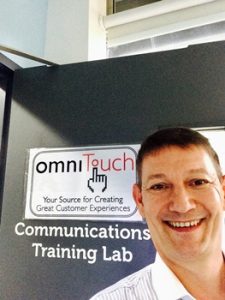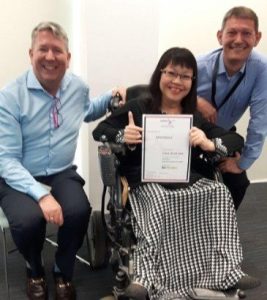In this special 1 day session we will help you write a Tender for Contact Centre outsourcing.
Choosing the right outsourcer for your Customer contacts is one of the most important decisions you will make.
And every outsourcer is different.
Some outsourcers have very specific niches they serve and they don’t perform very well outside of those niches.
Some outsourcers act as strategic partners while others just do what they’re asked to do.
Quality and the ability to deliver on your Customers’ expectations varies widely across different providers.
And the person or Team that manages your program might be a Contact Centre expert – or again they might not.
It can be hard for a layman to tell.
So it’s important to develop a Tender document that helps you hone in on your specific objectives.
And that helps you select the right outsourcer for your program.
The challenge is that the folks who have to develop the Tender and select the provider may not be Contact Centre experts
Many of our Clients & Friends have come to us with serious concerns about their outsourcers.
They also say they don’t have enough mastery of the Contact Centre environment to ask the right questions. Or to know when they are getting what they should.
To address this need we have developed a special 1-day session to help Participants develop a Tender document for Contact Centre outsourcing. And from there evaluate submissions.
In our 1-day workshop we will –
- Establish the ‘right’ KPIs against which to measure outsourcer delivery
- Understand how different channels of communication work – independently and together
- Understand who is responsible for ‘what’ in the outsourcing relationship
- How to handle rapid change in Customer communication channels
- Know what to look for to determine if your Outsourcer is the right ‘fit’
Over the course of the day, we will work through a solid template for developing a Tender for Contact Centre Outsourcing.
We will also discuss what the ‘best’ answers look like when comparing different outsourcers.
Simply go to our Public Programs page here to register.
Or simply drop me a line to [email protected]
Thank you!
Daniel
[email protected] / https://www.omnitouchinternational.com





 Because it sounds an awful lot like you’re looking to strike a deal and its your happiness that you’re putting up as table stakes.
Because it sounds an awful lot like you’re looking to strike a deal and its your happiness that you’re putting up as table stakes.



 If in the old days, a Manager came into my office and said they had a staff with an attitude problem, I’d ask them to tell me specifically which attitude was the problem.
If in the old days, a Manager came into my office and said they had a staff with an attitude problem, I’d ask them to tell me specifically which attitude was the problem.
 As an example, on a scale of 1 to 6 (with 6 being highest), my attitude criteria for hiring might be:
As an example, on a scale of 1 to 6 (with 6 being highest), my attitude criteria for hiring might be: It could be that they –
It could be that they –
 Commonly described as the capacity to deal with life’s daily pressures, resilience is valued as much as a great attitude or killer resume.
Commonly described as the capacity to deal with life’s daily pressures, resilience is valued as much as a great attitude or killer resume.
 And her own natural reserve held her back from expressing how she felt to her boss.
And her own natural reserve held her back from expressing how she felt to her boss.
 Work today can be tough. And everyone has a story. But folks with disabilities – the ones I see turn up to class day after day to actively learn new knowledge & skills – deserve our consideration.
Work today can be tough. And everyone has a story. But folks with disabilities – the ones I see turn up to class day after day to actively learn new knowledge & skills – deserve our consideration.





 Customer journey review has a powerful impact on the decisions you make around serving Customers.
Customer journey review has a powerful impact on the decisions you make around serving Customers. The achievement of the perfect Customer experience occurred at Dimension #2 – the Customer’s perception of the experience.
The achievement of the perfect Customer experience occurred at Dimension #2 – the Customer’s perception of the experience. “The perfect Customer experience is a set of interactions that consistently exceed the needs and expectations of a Customer…
“The perfect Customer experience is a set of interactions that consistently exceed the needs and expectations of a Customer… quickly.
quickly. That’s because, the fear of senior management reprisal is so strong that the cultural belief is that it’s better to mask bad results than deal with the senior fallout.
That’s because, the fear of senior management reprisal is so strong that the cultural belief is that it’s better to mask bad results than deal with the senior fallout.



















